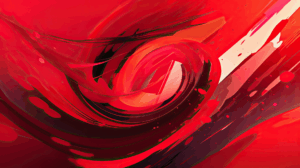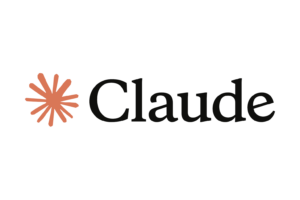AI Accelerates Your Creativity: The Future of YouTube Shorts
Hello, I'm Tak@, a systems integrator.
Even from my perspective as an SIer, who used to struggle with complex system designs, what’s happening on YouTube today is astonishing. Entering a text prompt to instantly generate music or video backgrounds… it’s like a form of alchemy that creates something from nothing.
YouTube Shorts is growing rapidly as a platform where anyone with a smartphone can easily create videos and connect with a global audience. Yet, behind this accessibility is AI technology that's revolutionizing video production. In this column, I'll explain the appeal and practical use of YouTube's latest AI features, Dream Track and Dream Screen. I'll also share key points about privacy and copyright that you shouldn't overlook, all from my perspective as an SIer.
AI Accelerates Your Creativity: Dream Track and Dream Screen
YouTube Shorts has introduced various AI features to give creators more freedom and expressive power. The most notable are Dream Track for music generation and Dream Screen for background generation. These features provide an experience that feels as if your imagination is being brought to life.
Dream Track: Original Music from Your Words
Dream Track is a groundbreaking tool that uses AI to generate instrumental music for your YouTube Shorts based on a text prompt you provide.
What makes this so groundbreaking? Typically, creating original music for a video requires specialized knowledge in composition and arrangement, or hiring a professional. With Dream Track, you can get an original soundtrack for your ideas easily, without any musical expertise.
The process is incredibly simple. Open the YouTube app, tap the "Create" icon, and select "Add sound" and then "Create music." All you have to do is type out the image in your mind, such as "a pop song that feels like a bright future" or "a moody jazz tune on a rainy day." The AI will interpret your words and generate several musical options in seconds. You can preview them and choose your favorite to add to your Short.
This feature is currently in a testing phase and is only available to a select group of creators in the US and artists who have agreed to collaborate. However, the generated soundtracks can be viewed by anyone in the world and can even be remixed for use in your own Shorts. The generated music will display a "Made with Dream Track" label, making it clear that it was created by AI.
It feels like the AI is instantly assembling a complex orchestration. This feature dramatically lowers the barrier to music production, enabling anyone to create soundtracks for their Shorts. It's a powerful tool designed to support creators.
Dream Screen: Video Backgrounds Where Imagination Takes Shape
Dream Screen is another experimental feature that uses AI to generate original images or videos from a text prompt to be used as a background for your Shorts.
Create content for Shorts using AI-generated features
The value of this feature is that you can set any scene you can imagine as a video background, without needing a physical green screen. For example, simply typing words like "the depths of ancient ruins" or "a mysterious planet floating in space" will prompt the AI to suggest multiple background images. You can use these as a static image or a 6-second motion clip in your Short.
To use Dream Screen, simply open the YouTube Shorts camera, select "Green Screen," tap "Dream Screen," and enter your idea. This feature is also in a limited testing phase for some creators, and prompts are only available in English for now.
In the past, generating this kind of visual content for system development required immense time and cost. The fact that it can now be done with a simple tap is a remarkable evolution. This feature enables creators with limited shooting environments or resources to achieve professional-looking visual expression, greatly expanding the creative possibilities for Shorts.
Smart Considerations for Using AI: Privacy and Responsibility
AI features like Dream Track and Dream Screen are a huge help for creative activities. However, it's crucial to understand that their convenience comes with a responsibility for the data you provide and the content that is generated. As a systems integrator, I'm always aware of the importance of understanding the "unseen parts" of a system.
How Is Your Data Handled?
When you use YouTube's AI features, the text prompts you enter, the content generated (music, images), and data and feedback related to your use of these features are collected by Google.
This data is collected to provide and improve YouTube’s products and services—including its AI features—and to develop and enhance the underlying machine learning models. For example, a soundtrack generated from your prompt, "relaxing summer beach music," could be used as training data to build a better music generation model.
You can view and delete the prompts and content you've generated in the past on Google's "My Activity" page. However, some content that cannot be managed there is automatically deleted within 60 days. Your usage history for AI features is on by default, and data linked to your YouTube account is stored for up to 18 months, while prompts and outputs not linked to a Google Account are stored for up to 3 years.
In system design, I believe clearly defining the purpose and scope of data usage is the most important part of building trust. While this data collection is an essential process for service improvement, understanding this system and checking your own privacy settings is vital for using AI features with peace of mind.
The "Imperfect" Reality of AI-Generated Content and Your Responsibility
AI is a powerful tool, but it's still an evolving technology. As such, AI-generated content doesn't always produce perfect results. The possibility of unintended errors is not zero.
YouTube's AI tools have safety measures in place to prevent the generation of inappropriate content. For instance, they're designed to avoid creating harmful content like deepfakes that look like real photos of identifiable people. However, as the creator who ultimately publishes the video on YouTube, you are responsible for carefully reviewing any AI-generated content before publishing it and ensuring it complies with YouTube’s Community Guidelines.
For example, there is a chance that a song generated by Dream Track could accidentally sound very similar to an existing copyrighted song, or a background image from Dream Screen could unintentionally contain discriminatory elements. Even with the AI tools I create for fun, I'm sometimes surprised by an unexpected output.
Therefore, even if content is AI-generated, the final responsibility for its quality and compliance with all rules rests with you, the creator. Have you ever relied too much on AI's convenience and failed to double-check? Making it a habit to perform a final review with your own eyes is the key to safe and enjoyable creative activities.
AI and Copyright: YouTube’s Rules You Need to Know
While AI-generated content is appealing, it is not completely free from copyright rules. On platforms like YouTube, existing copyright protection systems are strictly enforced.
The Role of Content ID and AI-Generated Content
YouTube has an automated content identification system called Content ID. This tool was developed to help copyright owners efficiently protect and manage their work on YouTube. It automatically matches uploaded videos against a vast database of audio and video files provided by copyright holders.
Even if the music or visuals are AI-generated, if Content ID determines they match existing copyrighted content, you could receive a Content ID claim.
When this happens, the copyright owner can choose from several actions. They can block the video from being viewed, place ads on the video and monetize it (sometimes sharing the revenue with the uploader), or simply track viewer statistics. These actions can also be set to be region-specific.
A key point to note is that for YouTube Shorts longer than one minute, a valid Content ID claim will result in the video being blocked worldwide and ineligible for monetization, regardless of policy. While this doesn't result in a direct channel penalty, it's a situation you want to avoid since it prevents many people from seeing a video you worked hard on.
For example, a Dream Track instrumental might accidentally be very similar to a hit song's melody, or a Dream Screen background image might closely resemble the design from a specific film. While royalty-free music from the YouTube Audio Library is safe from Content ID claims, carelessly using music from an external source labeled as "copyright-free" could lead to unexpected problems.
Therefore, it's crucial to understand that AI-generated content is not completely free from copyright restrictions. I believe you should pay close attention to selecting appropriate audio and visual materials. If you receive a claim, you have options to remove the content from your video or dispute the claim if you believe it's incorrect.
Remixing and Content ID: The Complexity of Using Others' Content
One of the appeals of YouTube Shorts is the ability to remix other creators' videos and music to express your own creativity. Soundtracks created with Dream Track can also be remixed by users worldwide to create their own unique Shorts.
Create YouTube Shorts with remixed content
However, this remix feature comes with complexities regarding the original content's copyright.
If the creator of the original video or audio you used in a remix deletes their content or places restrictions on its use for any reason, your remixed video may be affected. Specifically, for an audio remix, your video will be muted, set to unlisted, and scheduled for deletion 30 days after the original content is removed or restricted. You'll be notified via email, giving you a chance to download the video without audio and re-upload it with a different soundtrack before it's deleted. For a video remix, if the original video is deleted, your remixed video will also be deleted.
For example, imagine a popular artist creates an AI music track with Dream Track and publishes it in a Short. The track goes viral, and many creators remix it to make new Shorts. However, if the original artist later restricts the use of that AI music or deletes the video from YouTube due to a contract, all remixed videos using that music could also be affected.
The freedom of creation and remixing with AI is very appealing, but it's important to be aware of the original copyright holder's actions and license conditions, and to understand the risks. Depending on the content's license, a remixed Short may even be blocked. If you don't want other users to remix your content, you can change the settings in YouTube Studio.
Accelerating Creativity and the SIer's View: How AI is Changing Content Creation
The introduction of AI features like Dream Track and Dream Screen is significantly enhancing the creative potential of YouTube Shorts. This isn't just an evolution of tools; I believe it's a catalyst for changing the nature of content creation itself and unlocking the potential of creators.
AI Unleashes a Creator's Potential
The greatest value these AI features offer is an environment where anyone can create high-quality content without needing specialized skills or expensive equipment.
Previously, music production and video composition required skills in digital audio workstations (DAWs) and knowledge of complex VFX software. But with AI removing these barriers, we are entering an era where anyone with an idea can become a creator.
For example, if you wanted to create a video that looks like a scene from a short film, creating an original background track or compositing a special background was a lot of work. With Dream Track, you can simply type the image in your mind to instantly generate a suitable instrumental track. With Dream Screen, you can easily generate backgrounds like "a medieval European castle wall" or "a futuristic space station" from a text prompt and add them to your video, without a physical green screen.
This means creators are freed from the technical constraints of "how to make it" and can focus on the core of "what do I want to express?" and "what story do I want to tell?" AI is functioning as a powerful tool to bring a creator's ideas to life more directly.
I feel that AI technology is bringing about a "redistribution of power," making a field once limited to a few professionals accessible to everyone.
A Systems Integrator's View on AI and the Future of Content
From my experience as a systems integrator, I strongly believe that YouTube's AI features are not just an evolution of tools but have the potential to fundamentally change how we think about content creation systems.
The approach of "integrating complex elements to create value," which I honed while building large-scale systems, is now being elevated into a more efficient and creative process as AI takes on some of that role.
I once worked on a grueling project to replace a core banking system. Parts of the business logic were unclear, and sometimes we had to resort to what I'd call a "brute-force method"—parsing the COBOL language and straight-converting it to C#. That project required logical thinking, meticulous planning, and persistence.
But today, in the world of content creation, AI is handling that "unclear" and "complex technical" work, allowing creators to focus on the idea of "what to create." AI is no longer just an automation tool; it's evolving into a collaborative partner that stimulates human creativity and generates new ideas.
This evolution is rebuilding the content creation workflow and creating a more vibrant ecosystem where more people can share their ideas with the world. I'm confident of this.
What do you think about how AI technology will change the future of content creation?
Conclusion: Embracing the Creative Future with AI
The YouTube Shorts AI features, Dream Track and Dream Screen, are like a form of "alchemy" that instantly transforms our words and ideas into music and video backgrounds, unlocking a creator's potential. This points to a wonderful future where anyone can easily create high-quality content without special skills or expensive equipment.
However, behind this convenience are important aspects like data collection, privacy, and copyright that you must not forget. Even with AI-generated content, the ultimate responsibility lies with you, the creator. It's crucial to always verify information and maintain a mindset of being creative within the rules.
AI encourages us to think more deeply about the question of "what to create" and gives us a chance to explore new forms of expression. As a systems integrator, I'm always aware of the balance between the possibilities that technology offers and the responsibilities that come with it.
In my hobby of developing web services, the time I spend working with a beer in hand and my favorite music playing is what fuels my new ideas. Creativity isn't always born in a rigid environment. I encourage you to try out YouTube's AI features for yourself, experience the new world of creation they offer, and share the surprising discovery that "I can express this too!" with those around you.



